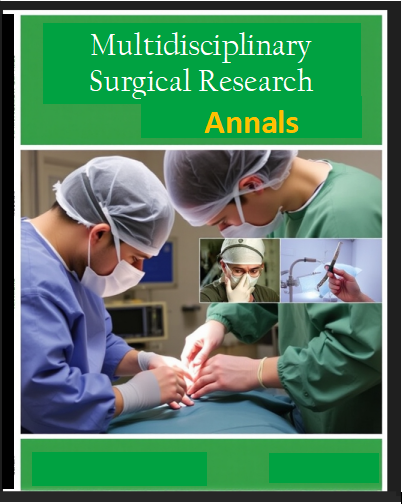Prevalence, Risk Factors, and Outcomes of Acute Kidney Injury in Severe Dengue: A Cross‑Sectional Study with Literature Review
Abstract
Background: Dengue is a major arboviral disease that affects millions of people every year, and its incidence has more than doubled since 1990 [1]. Acute kidney injury (AKI) is an increasingly recognized complication of dengue that markedly increases mortality and length of stay [2]. Current evidence suggests that the prevalence of AKI among hospitalized dengue patients varies widely (2–35 %), and risk factors such as severe dengue, male sex, diabetes mellitus, chronic kidney disease, and nephrotoxic medications have been implicated [3,4]. We conducted a hospital-based cross-sectional study and synthesized contemporary literature to provide updated estimates of AKI burden and predictors in patients with severe dengue.
Methods: Adult patients with severe dengue fever admitted to a tertiary care hospital in Lahore between January and June 2025 were enrolled. Severe dengue was defined using the World Health Organization (WHO) 2009 criteria of severe plasma leakage, severe bleeding or severe organ involvement [9]. AKI was diagnosed according to the Kidney Disease: Improving Global Outcomes (KDIGO) 2012 criteria (increase in serum creatinine ≥0.3 mg/dL within 48 h, 1.5‑fold rise in baseline creatinine within 7 days, or urine output <0.5 mL/kg/hr for 6 h) [7]. Demographic variables, comorbidities, laboratory values, and clinical outcomes were recorded. Baseline characteristics were compared between patients with and without AKI using χ² or t‑tests. Logistic regression was performed to determine independent predictors of AKI. Results were interpreted alongside a review of clinical studies published in the last five years.
Results: A total of 114 patients (mean age 34 ± 13 years, 56 % male) with severe dengue were included. Twenty patients (17.5 %) fulfilled KDIGO criteria for AKI. Most cases were stage 1 (14/20), with stage 2 in four and stage 3 in two patients. Patients with AKI were older (37.4 ± 7.5 vs 33.5 ± 12.8 years), had longer hospital stays (9.2 ± 2.3 vs 6.0 ± 1.8 days), and had higher rates of ICU admission (25 % vs 7%) and in‑hospital mortality (15 % vs 3%) compared with those without AKI. In multivariable analysis, diabetes mellitus (OR 10.4, 95 % CI 2.0–54.0, p = 0.005), hypertension (OR 5.0, 95 % CI 1.3–19.2, p = 0.018), chronic kidney disease (OR 20.1, 95 % CI 3.6–137.7, p = 0.002) and elevated international normalized ratio (OR 6.6, 95 % CI 1.4–33.9, p = 0.024) were significant predictors of AKI. The prevalence and risk factors were consistent with recent multicenter studies in Asia reporting AKI rates of 14–20 % [4, 11].
Conclusions: Approximately one‑in‑six adults with severe dengue developed AKI in this cohort. AKI was associated with prolonged hospital stays, greater need for intensive care, and higher mortality. Diabetes, hypertension, underlying chronic kidney disease, and coagulopathy were independent risk factors, echoing findings from contemporary meta‑analyses [3]. Clinicians should routinely monitor renal function in dengue, avoid nephrotoxic agents, and aggressively manage comorbidities. Further prospective studies are required to elucidate the mechanisms of renal injury and evaluate interventions for preventing and treating AKI in dengue.




